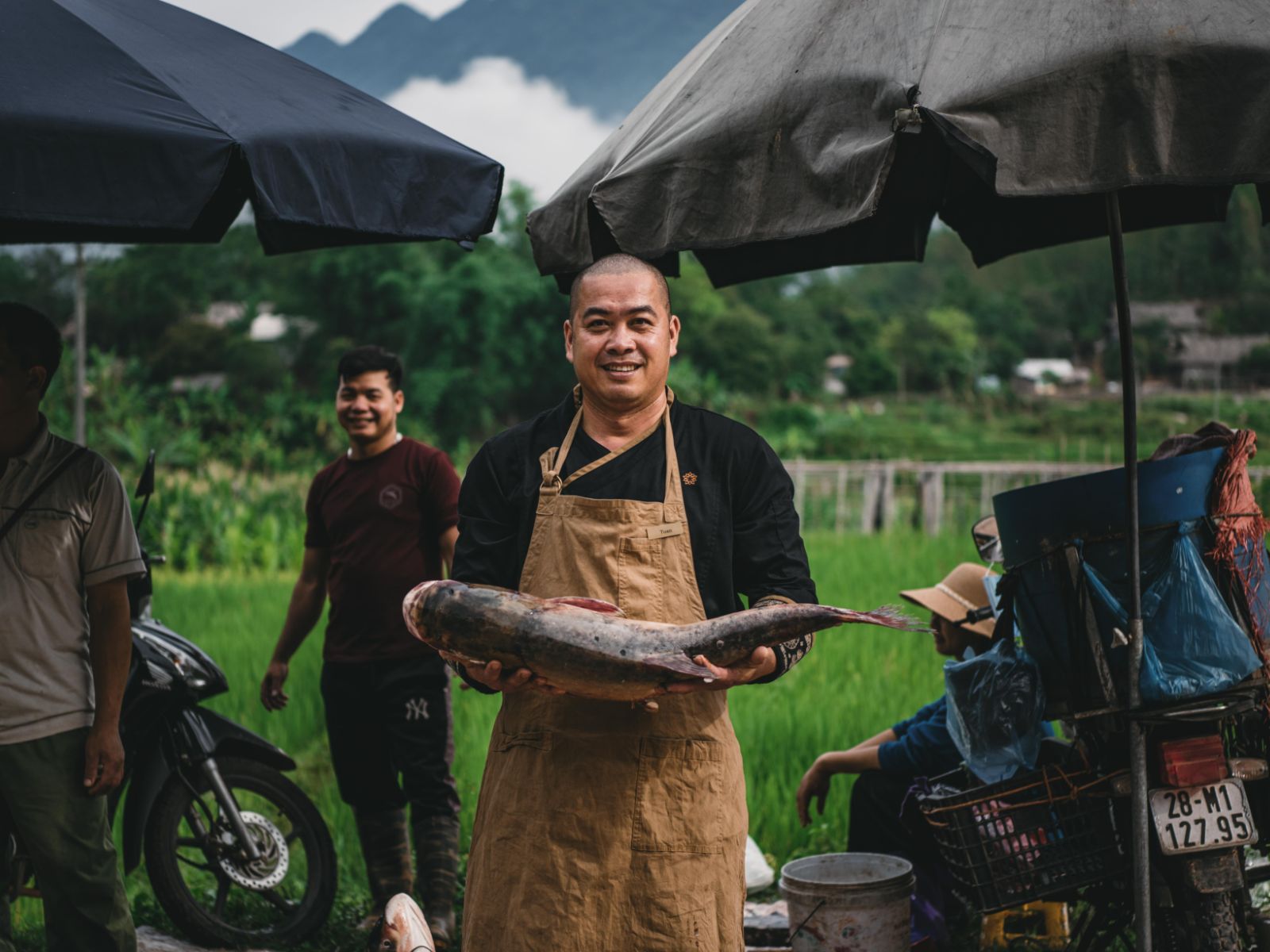All You Need To Know About Hmong Batik
When Hmong women paint with beeswax, it is like they paint their own dreams.
Batik is an ancient technique that’s very popular in the Hmong community. The Hmong batik artists use a special tool, dip it on the molten beeswax to create a piece of art that will withstand the test of time.
Equipment Used In Batik
- Fabric: Many types of natural fabrics can be used in Batik. But the tightest weave and highest thread such as linen, hand-loomed hemp, or cotton work better because these fabrics can absorb the wax the most.

A piece of hand-loomed hemp (Photo: Bao Khanh)
- Wax: Several types of wax can be used for making batiks but the Hmong often use the natural beeswax collected in the forest. They mix yellow beeswax with black beeswax in different proportions to have different shades of color.
- Drawing Tool: The special pen used to pain the beeswax is “Tjanting”. It includes a wooden handle, a small metal receptacle to hold the melted wax, and a nib where the wax flows through.

Tjanting pen and yellow beeswax (Photo: Bao Khanh)
- Indigo: The indigo is extracted from the indigo plant famous for its distinctive dark navy blue colour obtained from the processing of the plant’s leaves. They soak the leaves in water for several days and let them ferment to convert the indican in the plant to a natural blue dye indigotin.
- Melting pot: a small metal pot to cook the beeswax.
- Wooden board: To spread the fabric on to draw.
Hmong’s Beeswax Symbols
Since ancient times, the Hmong have used motifs to represent their daily life, religion, culture, decorate, and communicate as Hmong people don’t have any written language. Hmong women draw symbols on their skirts to create messages, disguising them as decorative patterns.

The Hmong cook beeswax in a small pot on a charcoal stove until it melts (Photo: Bao Khanh)
Batik artists cook beeswax in a small pot on a charcoal stove. When it’s molted, they dip the Tjanting into the liquid and draw pieces of art on the surface of the fabric. When the wax cools down and drys, it acts as a resistance against the indigo dye, keeping the patterns in their original colour. It often takes Hmong women a week or more to complete beeswax painting on a 0.36x5m cloth.

Create traditional motifs with a Tjanting pen (Photo: Bao Khanh)
Indigo Dyeing & Beeswax Removal
To create the iconic color, the fabric is dyed in natural indigo water. They soak the fabric in an indigo vat, dry it under the sun, and then soak it again. This process repeats several times until the fabric achieves the desired color.

A fabric in indigo color (Photo: Bao Khanh)
When the dyeing is complete, the wax is removed in boiling water and the wax-covered patterns are revealed beautifully on the blue cloth.
Preserve The Beautiful Custom
Mai Chau is home to the H'mong people, whose culture is preserved by the centuries-old practice of painting designs onto blocks of beeswax. Avana Retreat is a resort in Phang hamlet, Bao La commune, Mai Chau, where H'mong craftsmen' beeswax paintings serve as a focal point for the villas.
.jpg)
Drying a piece of Batik painting

Batik Painting Workshop is available weekly for guests to experience
In particular, H'mong artists from Avana Retreat's Stilt House Museum provide free beeswax painting classes on select days of the week so that visitors can learn about and try their hand at this centuries-old craft. You can also observe pieces of Hmong art displayed throughout the retreat.


